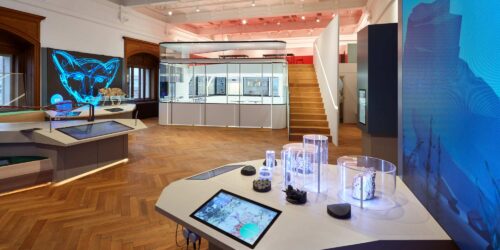Christopher Lindinger
-
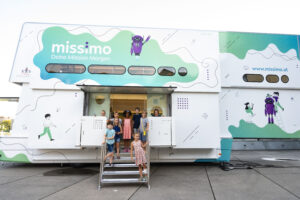
missimo
Mobile STEAM Learning for Kids
missimo is a project for children aged eight to ten that offers many experiments on topics such as AI, robotics, and programming. The special appeal: missimo visits primary schools in Austria’s rural areas by truck.
-
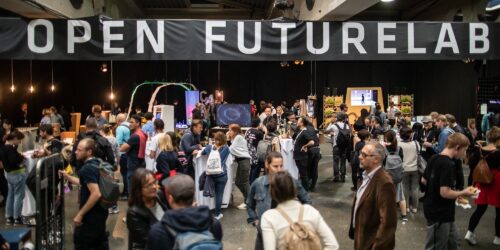
Open Futurelab 2019
The festival site at POSTCITY in Linz was used as a stage for Open Futurelab until 2019. Created with the Japanese public broadcasting company NHK, Media Platz was a prototype of an open media plaza consisting of cardboard and high-resolution screens, which was used as a forum for public debate. Various panel discussions took place…
-

Rotax MAX Dome
In collaboration with BRP Rotax, the Ars Electronica Futurelab created an experience of the latest technologies in the field of digital gaming worlds and analog machine technology. In the Rotax MAX Dome, opened in 2019, visitors can test the engine manufacturer’s new e-karts on a sophisticated racetrack, race through virtual worlds and experience specially developed…
-

Jobs of the future in an automated mobility environment
What does our road traffic look like when automation becomes reality? How does a traffic policewoman work in a world where cars drive themselves? What does a driving instructor do when you no longer need a driver’s license?
-
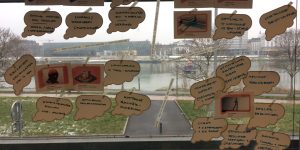
WKOÖ Innovation Lab: Digital Innovation in Construction
Technology, digitization and industry are changing the world around us. Developers, planners and executors in architecture, construction, engineering and manufacturing — they all contribute to these changes and turn visions into reality. But the possibilities offered by digital and new technologies also raise questions: How should companies position themselves? How do we want to work…
-
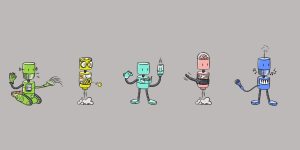
Losgröße 1 – Technisches Museum Wien
In November 2018 Technisches Museum Wien opened the exhibition “Arbeit & Produktion” as part of the series “weiter_gedacht_”. The series of events put current research and development at the centre of the 2018 programme and focused on how central features of society are affected by technologically driven change.
-
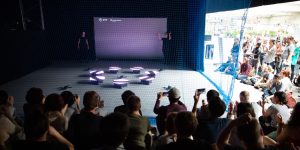
Open Futurelab 2018
Following an extended period of integrating contributions from the Ars Electronica Futurelab at various festival settings, the 2018 Open Futurelab initiative in the POSTCITY was intended to create a key interface for the lab’s creative international network.
-
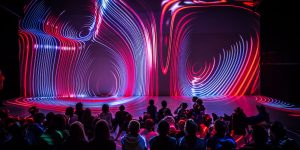
Immersify
They almost make us forget the world around us: Virtual Reality (VR) applications let us dive deep into images and videos, promising interactive experiences. To lead immersive media from a niche phenomenon to a more widespread practice in the consumer market, the three-year EU-funded project Immersify took to the task of research and development with…
-
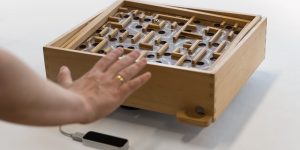
MANUACT
How can gesture research be presented so that it is comprehensible by everyone? How do you identify natural gestures for specific applications? What are the origins of such gestures, and how can they best be used in future interfaces? The Ars Electronica Futurelab has been collaborating with Chemnitz University of Technology to get to the…
-
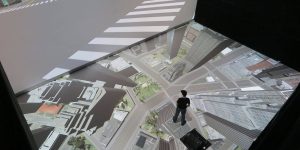
Tumcreate
The immersive, virtual and interactive 3D environment of Deep Space 8K as part of a gigantic scalable future project: As a VR research and development laboratory, the international research platform TUMCREATE offers impressive possibilities for presentation, collaboration and simulation for the development of a new infrastructure and mobility concept for the megacity of Singapore.
-
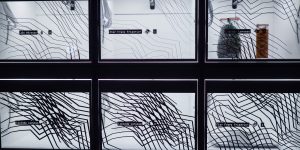
SAP Data Kitchen
The Ars Electronica Futurelab assisted SAP in designing a meeting place for innovative start-ups based on the model of the Hana Café in Palo Alto. The so-called Data Space, which would take shape at Rosenthalerstraße 38 in the center of Berlin, features two storeys of which the first floor is composed of an event space…
